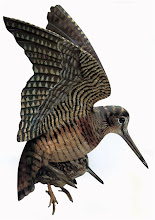
In our third experiment about the tracking of the Scolopax rusticola in 2008, Araba’s PTT kept emitting up to October 20th.
We knew that the bird was dead or its PTT detached, since the activity sensor was without changing during all the last emissions.
We try to recover that PTT in 2008 with the help of MTI and of some researchers. But there was no way to get it.
In 2009, with the help of some organizations and of some researchers we tried a new approach to find that PTT.
Finally, using a special methodology developed some time ago by Paul Howey (MTI) and with the invaluable help of very good friends, we recovered the PTT.
Methodology
Finding a lost PTT-Part 2, explained by Paul Howey[1].
(1) Kind of scanner: ALINCO-DJ-X3.
(2)Frequencies: Main frequency: 401.682. Upper frequency: 401.687. Lower frequency: 401.675.
(3) Time the PTT was emitting: around 3 hours and a half.
Conclusions
(a) We have proved that Paul Howey’s methodology to find lost PTTs is correct. We have proved that VHF telemetry is the ideal method to find lost PTTs.
(b) Argos is correct when they say that the accuracy of a 3 class location is inside a circle of 250 meters of radius[2].
However, as pointed out by Christian Ortega of CLS (Argos), one should take into account the ellipse results. The circle error is an approximation and with “flat” ellipses, error estimated may be quite different. That was our case [3].
(c) It has been a real pleasure to know a lot of different people: some through e.mails and internet (Nikita, Misha and Sergey), others (Alexandr, Ilya and Valery) in real touch. All of them will always be in our memory, if only because all and each of them were able to give us the opportunity to have a real wonderful time in Karelia.
Thanks a lot! (= Mila esker!)
Long live Karelia!
As Shakespeare wrote: All’s Well That Ends Well!
For more information, see The recovery of Araba's PTT in Karelia:








